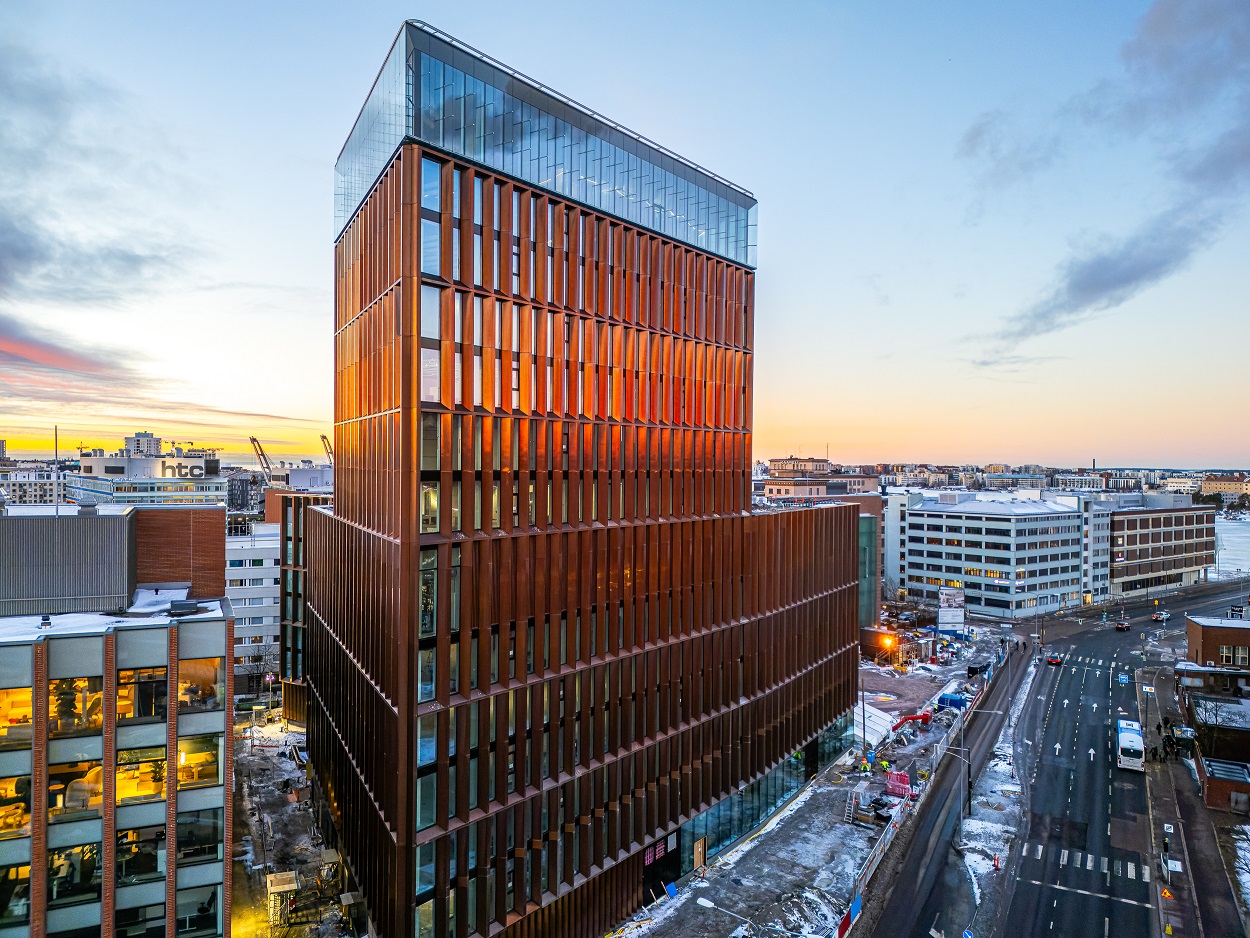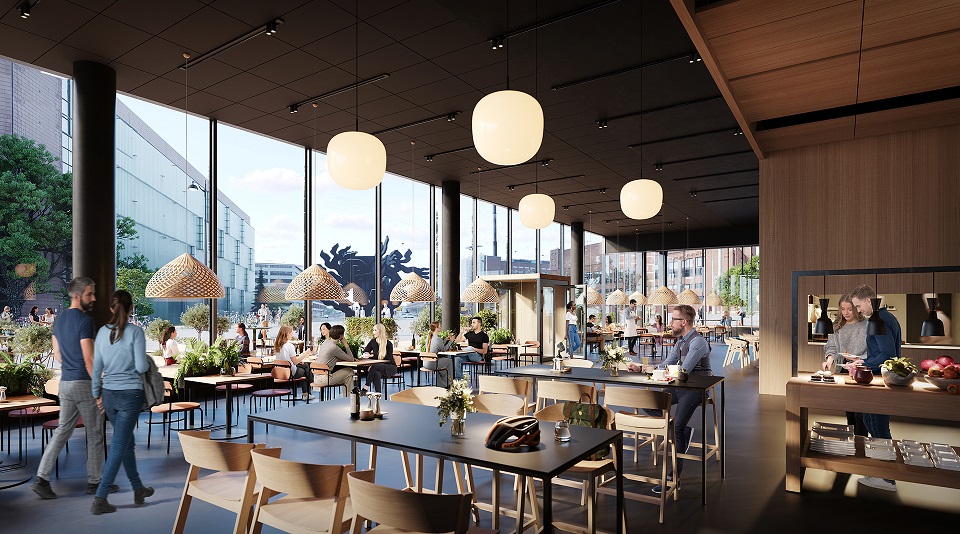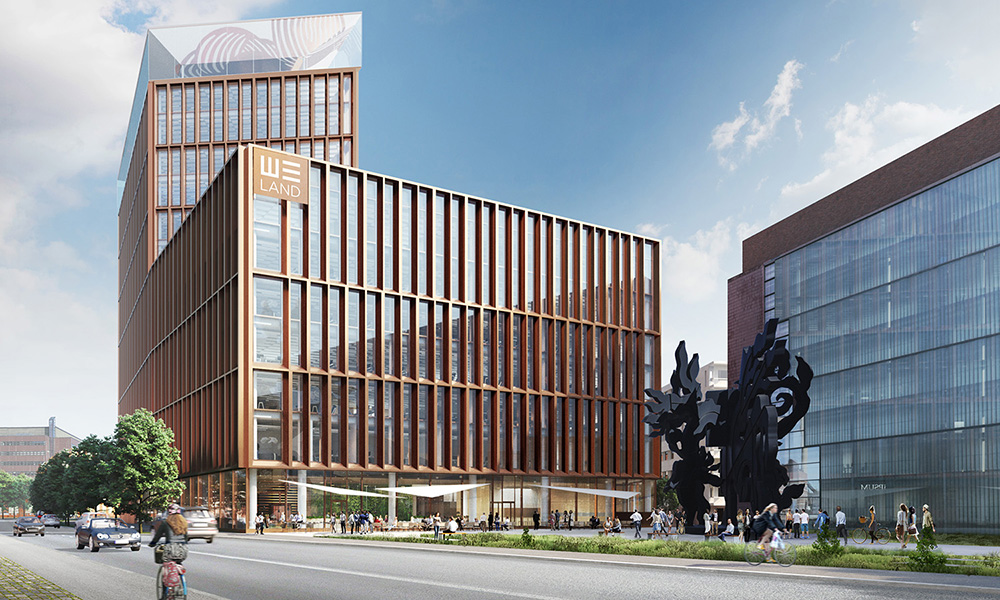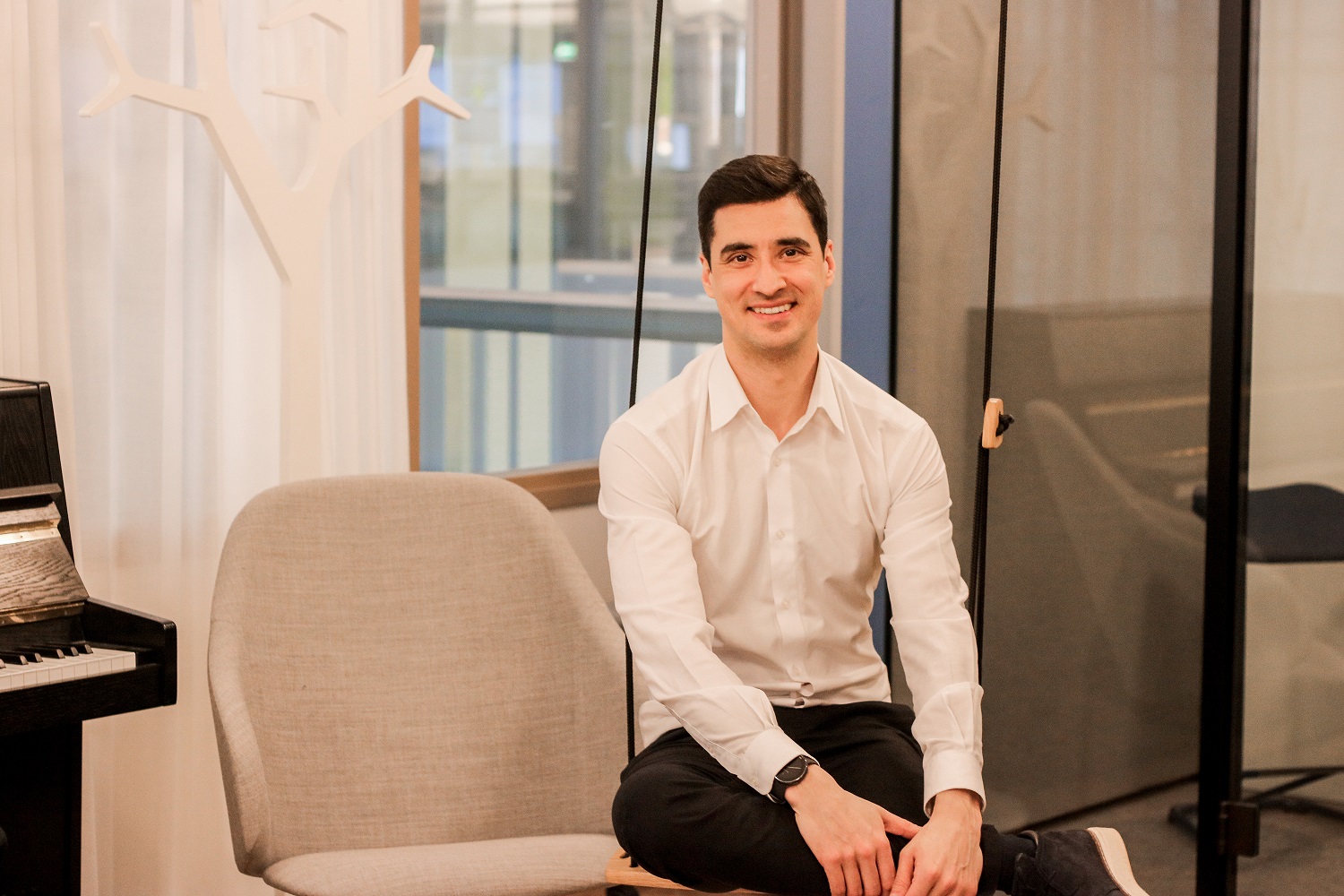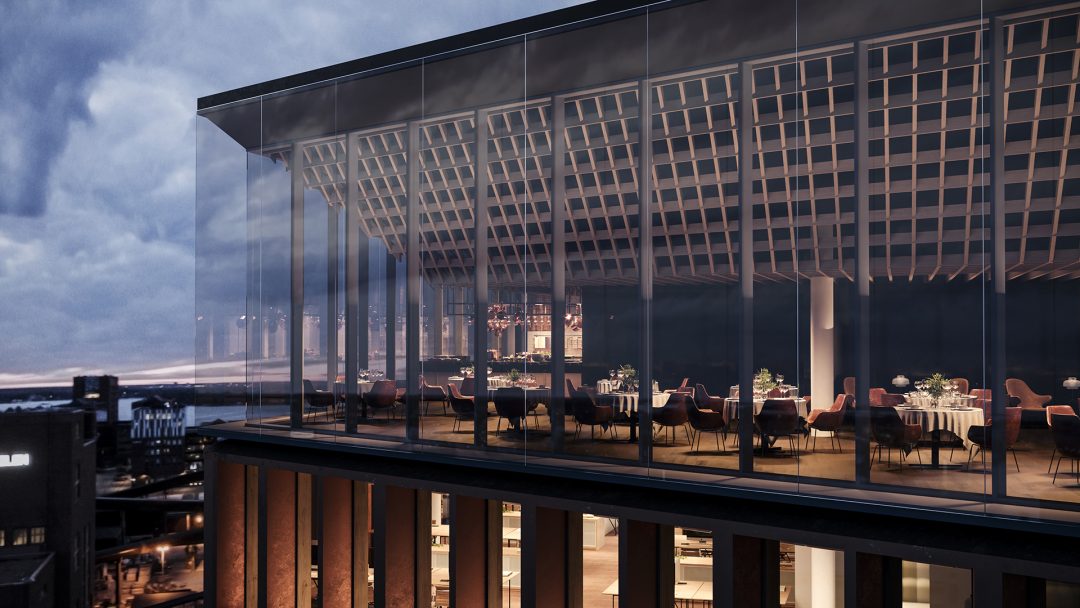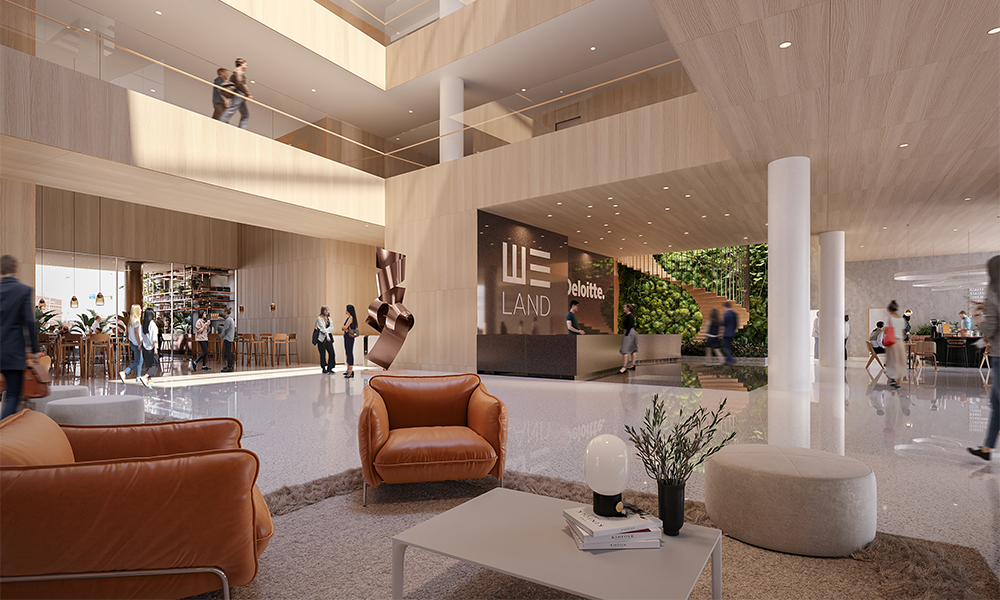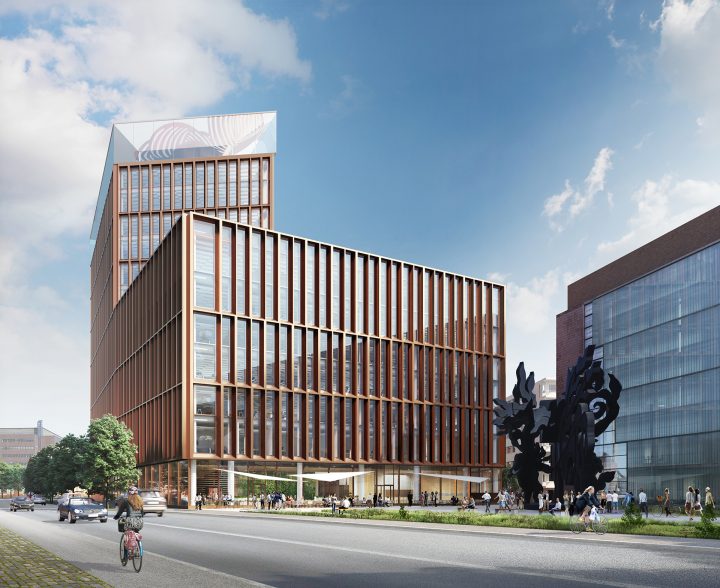NCC has signed a lease agreement with Helen, an energy company which will move its headquarters to We Land office spaces in summer 2025. Helen will get about 6500 square metres of new spaces designed for them on four floors at We Land. The new office building will be completed in Helsinki Ruoholahti in summer 2024.
The new building will have 14 floors and 18,000 square metres of office space. The spaces are mainly let to Deloitte, Cargotec and Helen. The move will enable closer cooperation between companies in Helen Group as Helen Electricity Network Ltd will relocate to the same premises as its parent company. We Land is also located in Porkkalankatu, close to Helen's Salmisaari power plant.
Helen has concluded a contract with NCC on renting new premises in the We Land office building currently under construction. We Land is an innovative office solution built around a sense of community, experience and sustainability.
– For us, the We Land premises are, first and foremost, a meeting place that supports innovation and different ways of working. With We Land, we want to offer a spectacular, efficient setting for the important work our employees are doing in promoting the green transition in line with our new strategy, focusing on flexibility and profitability, says CEO of Helen Olli Sirkka.
The new premises offer a modern, adjustable working environment that meets the requirements of mobile knowledge work. The facilities include teamworking spaces, such as brainstorming areas, project spaces and conference rooms, as well as various facilities for individual work. The We Land premises are flexible and versatile. Designed for both current and future needs, the premises are also cost-effective.
– The new premises will offer us a great opportunity for a better working environment and a sense of community. Together, we'll be able to fully tap into our expertise, learn from each other and grow together, says Markus Lehtonen, CEO of Helen Electricity Network Ltd.
– Developed and built by us, We Land will provide high-quality, environmentally certified premises for Helen. We believe that the diverse services and communal design solutions will serve as an excellent support for modern ways of working, says Petri Bergström, Head of NCC Property Development Finland.
We Land will provide diverse services, such as restaurants, cafés, social premises and multipurpose premises. The building is the first construction project in Finland to focus on environmental sustainability in line with the environmental criteria of the highest BREEAM Outstanding rating.
– With Helen’s lease agreement the office spaces at We Land are almost let in full. We are extremely glad to have a forefront energy company join We Land’s success story. We Land has established its position as the most attractive office project in Ruoholahti. It is well able to respond to the current market demand, since most clients are looking for high quality, good service and environmentally certified solutions, Head of Sales Uku Jaatinen from NCC Property Development says.
In We Land, the calculated energy consumption is -23% of the limit value under the national legislation. The building will belong to Energy Class A. The utilisation rate of construction waste from the building site is 95%. About a 30% CO2 reduction rate was achieved in the design process. For example, the building’s façade is from recycled copper which can be further recycled.
We Land’s General Architect is JKMM Arkkitehdit.
